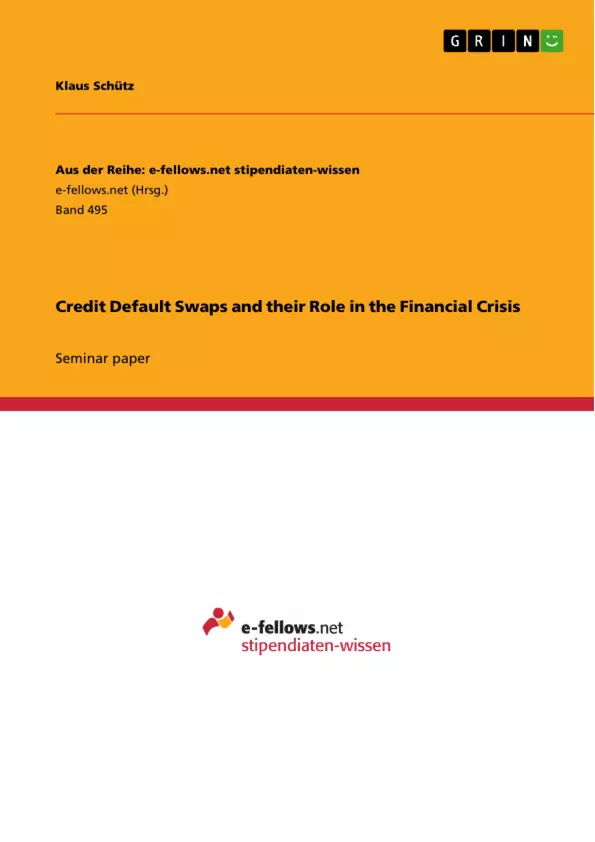A credit default swap is essentially an insurance contract to hedge credit risk. It is a type of derivative whose value depends on the likelihood of a company defaulting. In this type of derivative two parties enter a contract where one party agrees to pay another in the event of a company defaulting on bond payments (also known as a credit event) for a premium or spread.
CDS played a pivotal role in the recent financial crisis. It is also due to CDS that the crisis in the US housing market grew to a danger for the global capital markets. They were mainly responsible for the fall of insurance giant AIG and other turmoil over the course of the financial crisis. In this paper the nature and history of CDS is examinzed and their role in the financial crisis analyzed.
Table of Contents
- What are Credit Default Swaps?
- History
- CDS in the Financial Crisis
- Developments after the Financial Crisis
- References
Objectives and Key Themes
This research paper aims to explain the nature of Credit Default Swaps (CDS) and analyze their role in the financial crisis of 2008. It explores the historical development of CDS, their function in risk management, and the implications of their widespread use in the market.
- The nature and operation of Credit Default Swaps
- The historical development of the CDS market
- The role of CDS in the financial crisis of 2008
- The impact of the crisis on the CDS market
- Developments in the regulation and use of CDS after the crisis
Chapter Summaries
- What are Credit Default Swaps? This chapter introduces the concept of CDS as a type of derivative that provides insurance against credit risk. It explains the two main types of CDS payoffs: physical and cash settlements, and discusses the total market size of CDS.
- History This chapter traces the origins of CDS, highlighting their development as a means to mitigate credit risk and free up cash reserves for firms. The chapter also examines the early stages of the CDS market and the factors that contributed to its growth.
Keywords
This research paper focuses on the concept of Credit Default Swaps (CDS), their history, and their role in the financial crisis. Key terms and topics include credit risk, derivatives, financial crisis, regulation, and market size.
- Citar trabajo
- Klaus Schütz (Autor), 2011, Credit Default Swaps and their Role in the Financial Crisis, Múnich, GRIN Verlag, https://www.grin.com/document/198665



